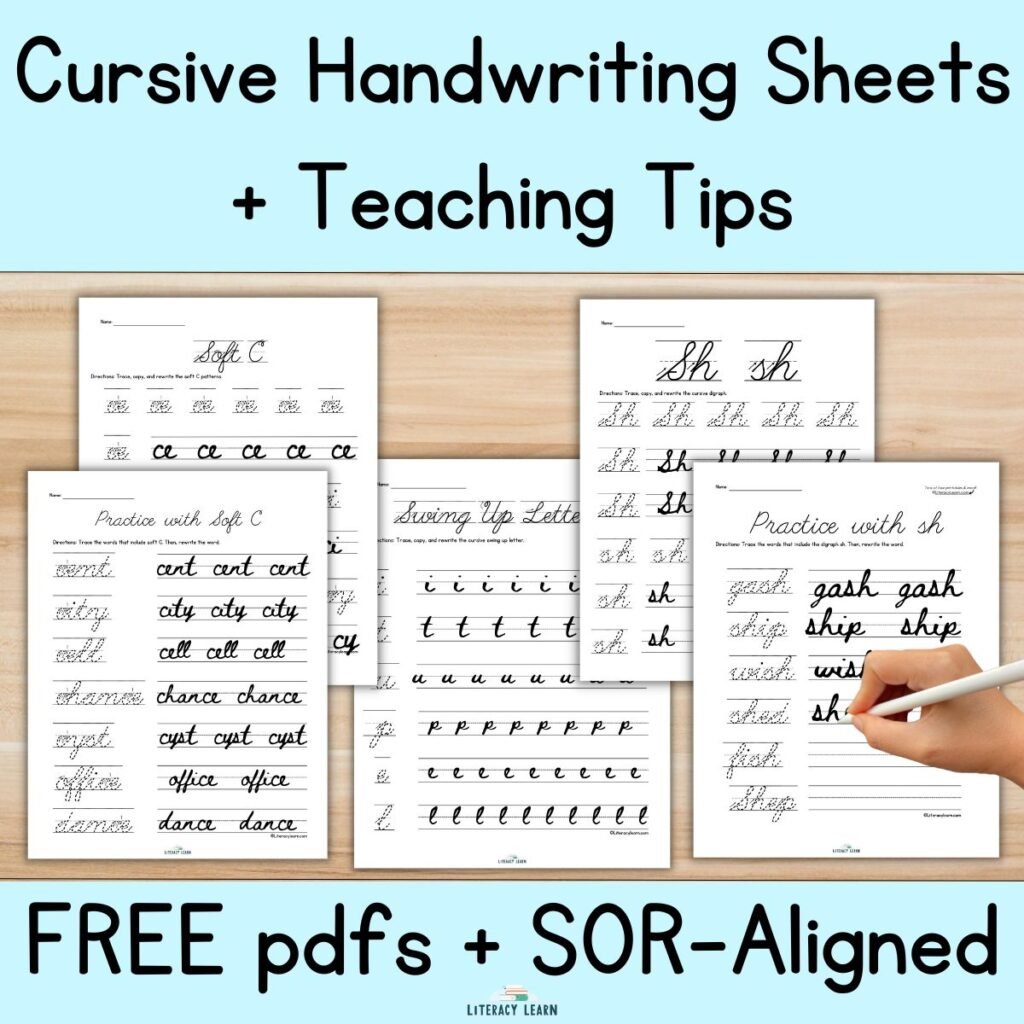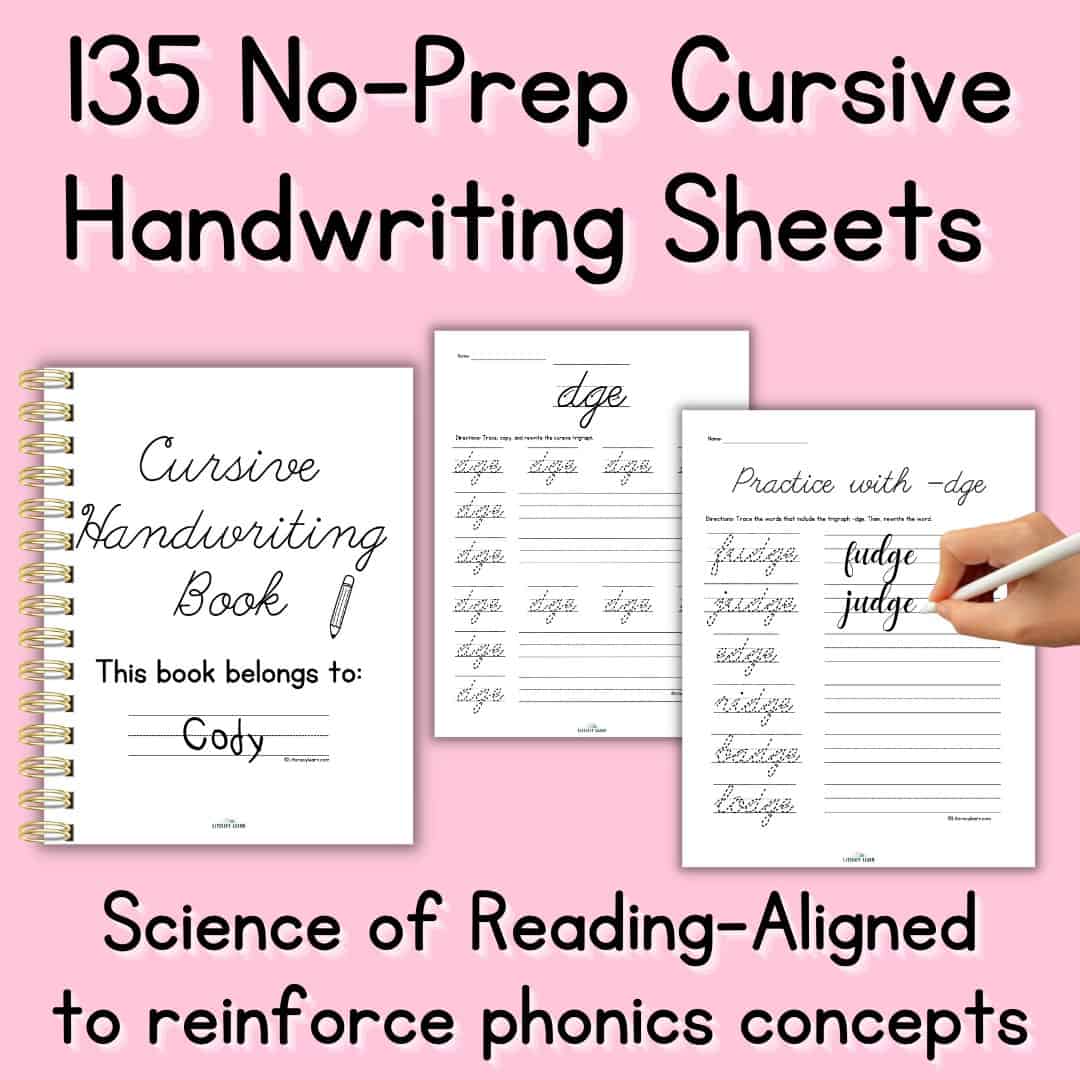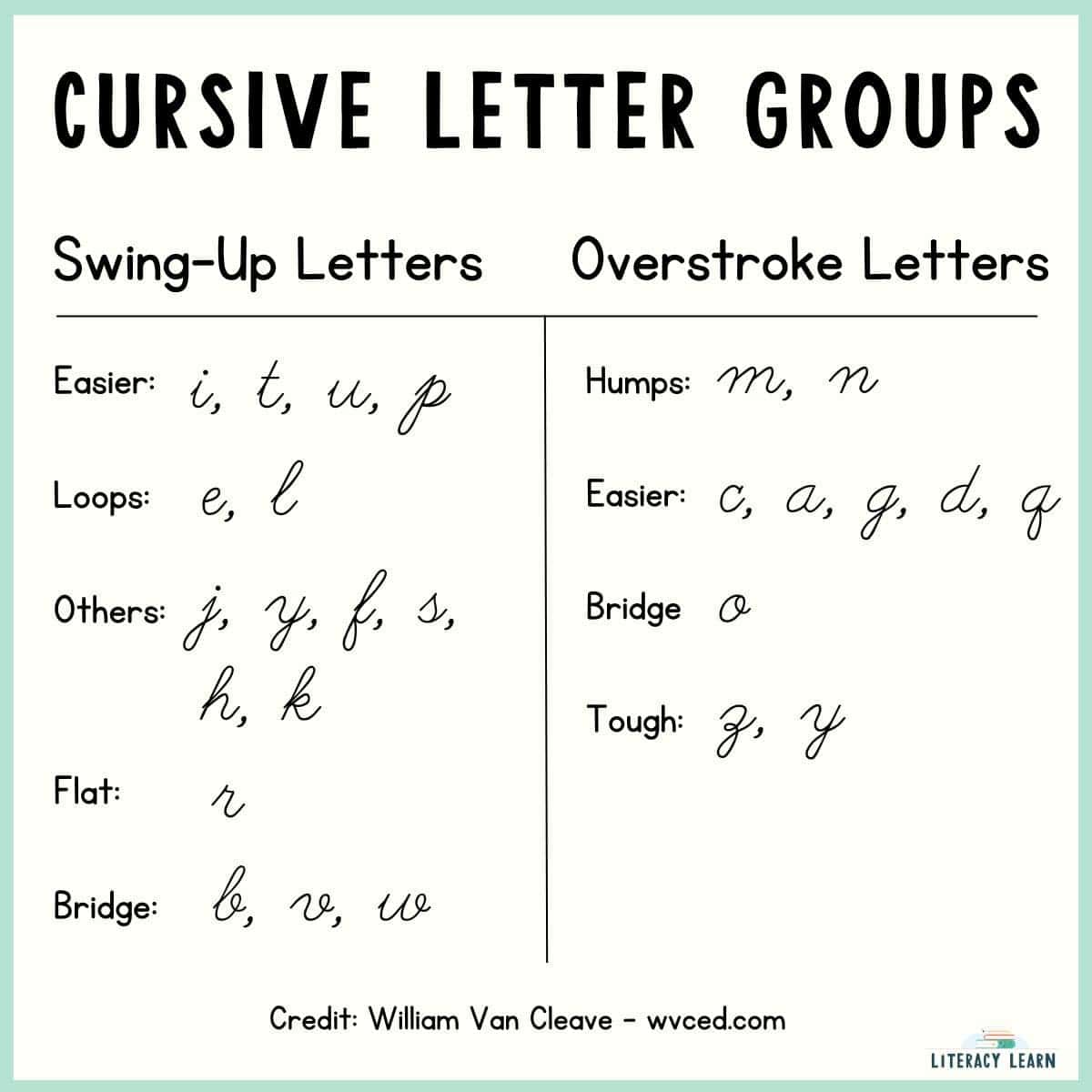
This post may contain affiliate links. As an Amazon affiliate, we earn from qualifying purchases. See our disclosure policy.
Get 11 free cursive handwriting sheets that are Science of Reading Aligned for targeted cursive AND phonics practice. Read all about the importance and benefits of explicit handwriting instruction, including tips for teaching cursive writing.

Table of Contents (Skip Ahead)
Current researchers have found that the human brain has many interconnected pathways related to literacy. That’s why current best practice is to use strategies to promote orthographic mapping – it helps build those important connections between letters and sounds.
But did you know that handwriting is a pathway too? Multiple studies have shown that practicing letter formation helps link the letters to speech sounds. But this connection doesn’t happen when typing. Fascinating, right!?
This is why research shows that when students learn explicit letter formation, they also become stronger readers, spellers, and writers. The connections between the pathways strengthen a child’s overall literacy skills.
Based on the science, most educators today would agree that handwriting instruction is extremely important. Many would also say that manuscript print should be taught first because the books kids will encounter in their early school careers are all written in manuscript. So it only makes sense!
But then that naturally raises the question:
👉 Do we need to spend time instructional time teaching cursive, or is manuscript enough?
Right now, there isn’t enough research to say if teaching cursive is a necessity. But what experts agree on, and what research supports, is that sounds and spellings should be taught along with letter writing.
Whether it’s manuscript or cursive, at least one script should be taught using a structured and explicit approach. In this post, we’re going to focus on cursive writing.

There are definite benefits of cursive writing, especially for kids with dyslexia or dysgraphia. The International Dyslexia Association strongly advocates for teaching cursive writing, so we’ve listed out a few of the benefits below:
👉 Did you know? Research has shown that by middle school, most fluent writers have developed “a personalized mixture of cursive and manuscript” (Ball, 2016).
I have seen this firsthand with my older students, and I actually write like this myself!
So even though there’s no conclusive research or evidence that we should be teaching cursive, I wanted to share where I stand on the issue based on experience and personal opinions…
👉🏽 In my experience as a teacher for over a decade, I believe it’s worthwhile to teach cursive. I want my students to be able to sign their names in cursive, and I feel it’s important that they can read all types of script wherever they encounter it.
👉🏽 I don’t think we teachers need to use a lot of instructional time to teach children cursive. This is because studies show that kids aren’t going to stick with writing in pure cursive. It’ll most likely wind up being a mixture of both cursive and manuscript.
👉🏽 I think cursive is important to teach to children with reading and writing challenges! My son is diagnosed with dysgraphia, and I’ve seen firsthand how his cursive writing is quicker and actually more legible.
👉🏽 I also believe that keyboarding is a very valuable tool, and kids need to learn this skill in the 21st century! I think this instruction can begin when kids are a bit older and only after handwriting has been explicitly taught. Typing instruction should never be a replacement for handwriting instruction.

So if you decide to teach cursive to your child or your students, we’re here to help!
Keeping in mind everything that was mentioned above, this resource doesn’t just have kids practicing cursive letter formation in isolation. Instead, these cursive worksheets are designed to help kids learn cursive in connection with phonics and spelling skills.
The worksheets promote ligaturing (connecting letters) in a way that reinforces their knowledge of graphemes.
For example, the worksheet for the letter Q has QU together. Why? Because the spelling rule is “Never a Q without a U.” Other worksheets are specific to digraphs, like sh and ch, since so many words include these graphemes.
We’ve created 11 free worksheets for cursive writing practice. Included are:

📝 We highly recommend grabbing our extended Cursive Handwriting resource that includes 135 no-prep pages. It’s really all you’ll need to teach and practice cursive handwriting while reinforcing phonics concepts!
When using these worksheets, teach your students to use Simultaneous Oral Spelling (SOS). This is a procedure where students say the letter names aloud while forming the letters.
This allows children to link sounds with their letters as they write, and it’s the perfect example of multisensory practice!
You should also teach cursive letters in groups according to their movement pathways. All cursive letters start on the baseline, but we can categorize them into two main types of letters: Swing Up Letters and Overstrokes Letters.

William Van Cleave suggests teaching these groups of letters in this order:
Swing Up Letters
Overstrokes
Van Cleave also addressed other Best Practice Cursive Handwriting Tips:
Remember, whether you decide to teach cursive handwriting or not, the most important thing is that we teach children letter formation using a structured approach and explicit movement pathways.
This is what research supports as a key link within the brain that helps create better readers and writers.
What to learn more about brain science? Watch this webinar by cognitive scientist Stanislas Dehaene. He talks about the connection between speech, meaning, and letterforms in the human brain. It’s fascinating!
References: